JULY - OPEN-ENDED
Inspired by a whole school week on ‘The Lost Words' by Robert Macfarlane and Jackie Morris
“Last year we did a whole school week where we transformed our library, we did a fairytale one and each class took a fairy-tale, made artefacts, writing, we displayed it to transform the library because it was looking a bit of a sorry state. We wanted to refresh it so this year we've decided to do the 'Lost Words' week and tie it in with nature. So what I did was I did the input that we had in Year 6 which is the roots of the tree that you've got there, so things like reading 'The Lost Words.' Then on the trunk of the tree I put down what the Year 6 output was, so what work did they actually do? What things did they generate? ... My little acorn over here is the cost. I've got some little frown faces. We did buy three books so it was shared one book between two classes which is a shame that's all we could afford but that cost us £39 and it doesn't sound a lot but there isn't a lot of budget to go around for something like that.”
Inspirations in and out of the classroom
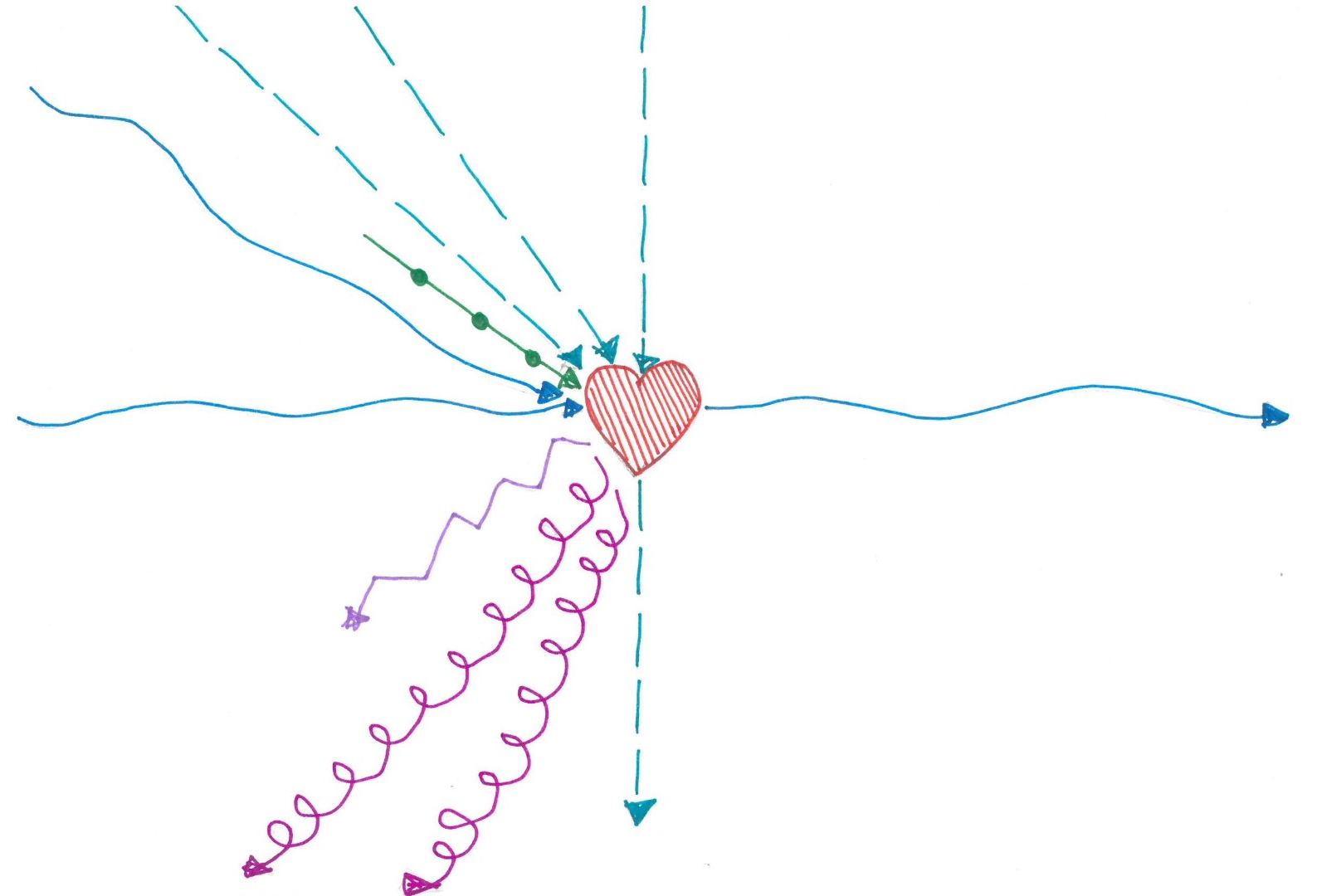

“I was looking at inspirations in and out of the classroom, so what inspired me particularly in literacy and then anywhere where I felt inspiration has been passed off to other practitioners. So the heart is the classroom. This is inwards. There are a few that crossed straight through which is me thinking, well, there's been inspiration in but then I've gone and done something else with it afterwards so there's been an action to follow up. So the dash arrows, they're things that I've actively sought out either on the internet or by asking other people. The wavy lines are someone at school showing off their skills and I've thought, yes, I'm having that in my own!”
What do children value in their English learning?


“This is a reflection of my children. I got a group of them and I asked them – what do they value about their English learning this year? What I said to them was, 'Choose something that makes you proud.'
So they basically had time to go through their English books from this year and they could have one Post-It-Note. The parents are coming in for a session to look through their books and have a chat and things so it was to choose one thing that they were proud of and they definitely wanted to talk about it before they flicked through everything else. So I had these books and I guess I made the categories up as I went along depending on what it was, so there aren't categories for things like spelling/punctuation because no one chose this activity! So there was sustained story writing, sustained factual writing, retelling through pictures and story maps and then one child chose vocabulary work. I don't know why! She must have particularly enjoyed it!”
Comparing numbers of books bought by me and bought by school
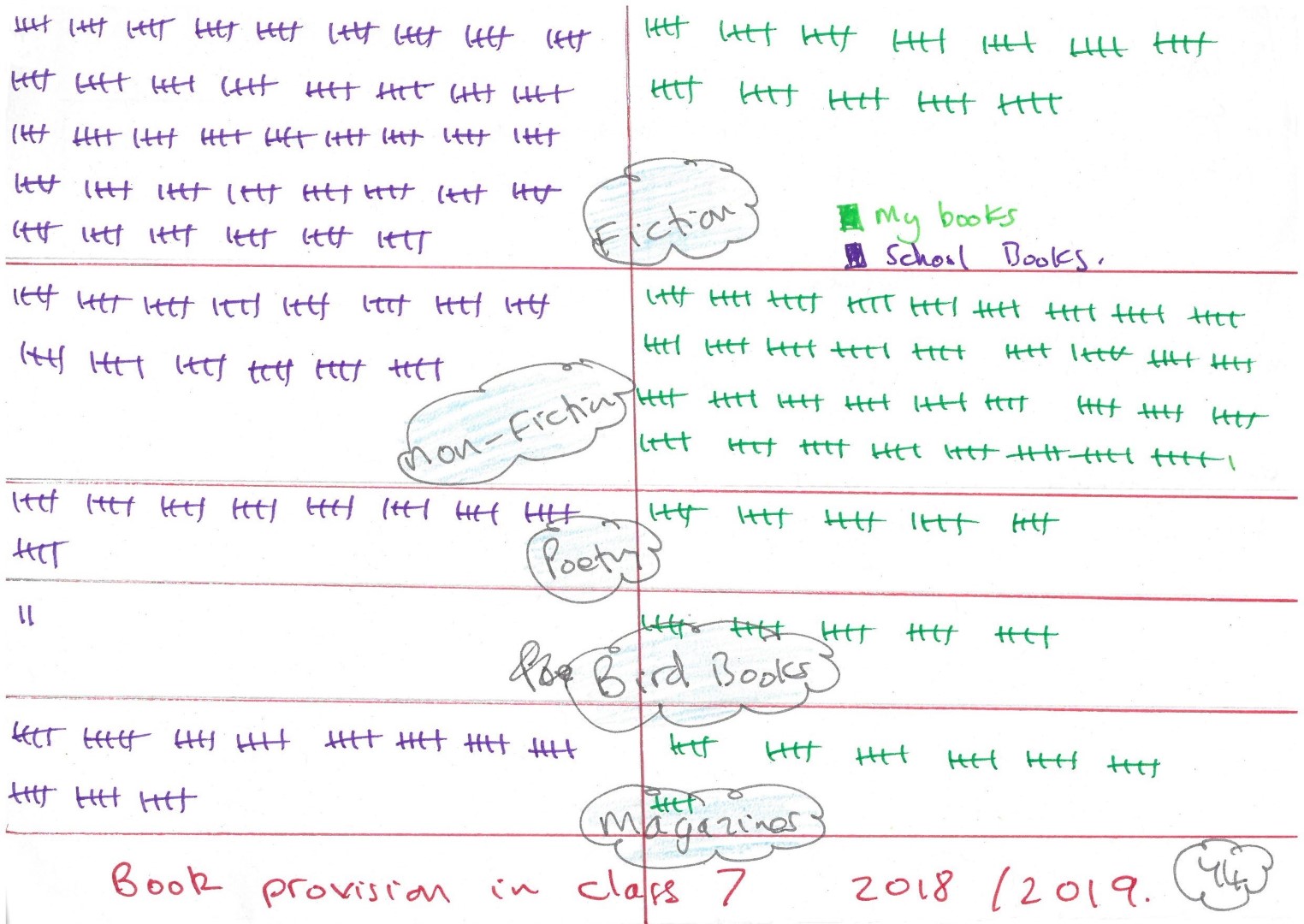
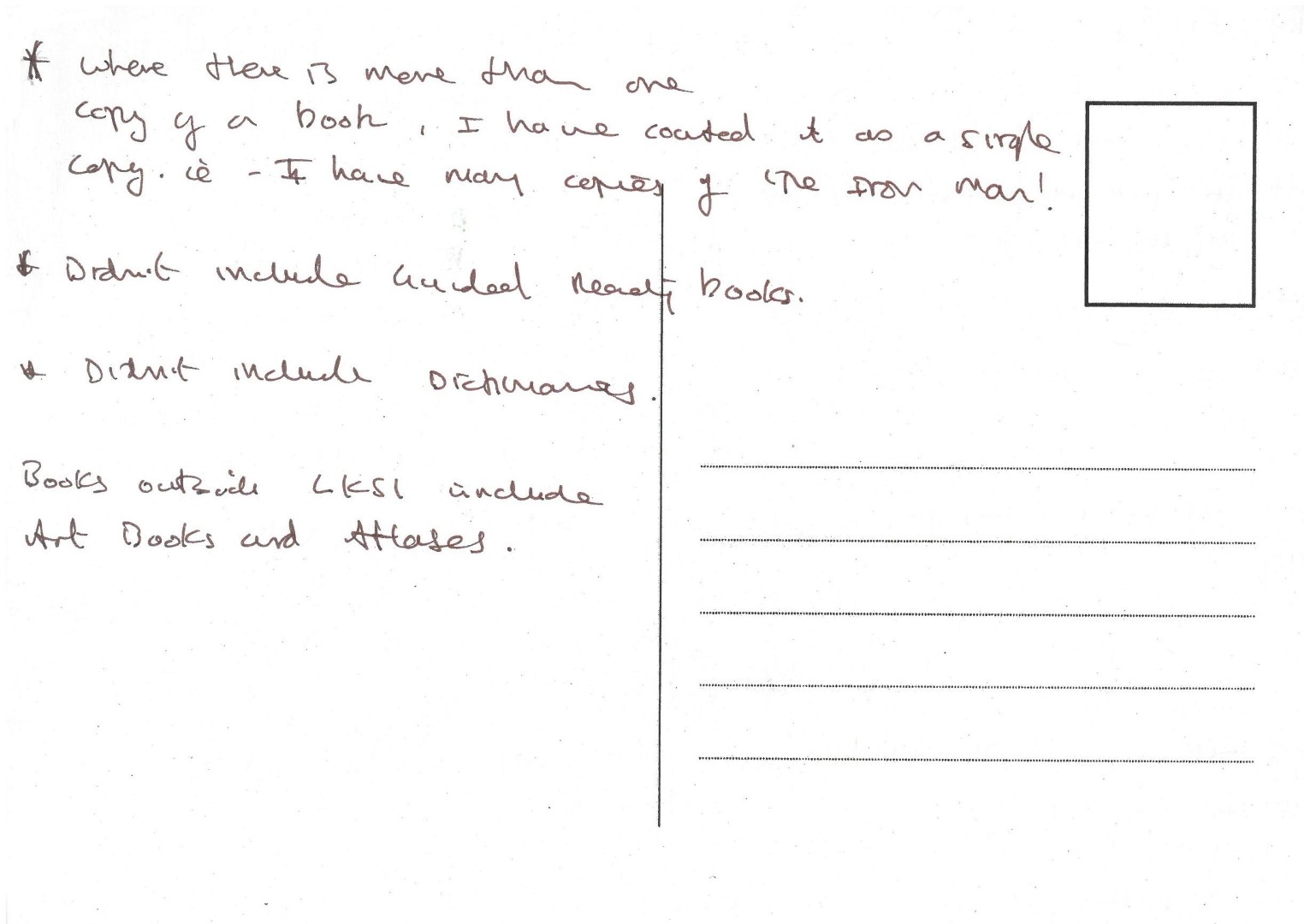
“In the end I decided in my classroom for me, my literacy provision really is or are the books that are available ... from a good book you can get almost any genre of writing you want to. So I set about counting the books in the class because I do realise a lot of them are mine! Some of them are books that were my own children's, some of them I've picked up in all sorts of places, second-hand bookshops or teachers that have left.
On this side are school's books and on the other side are my books. So the first one is fiction. Now, in a way that sort of gives a false impression because there are a lot more fiction books at the back of the class but they don't really look at them, whereas these ones are ones I've got from UKLA and books that I've had for years and years and years, so even though there's a lot more there which is why if I'd had more time I should have illustrated that on here as to usage as well as just on the shelf.”
Reflecting on marking English books
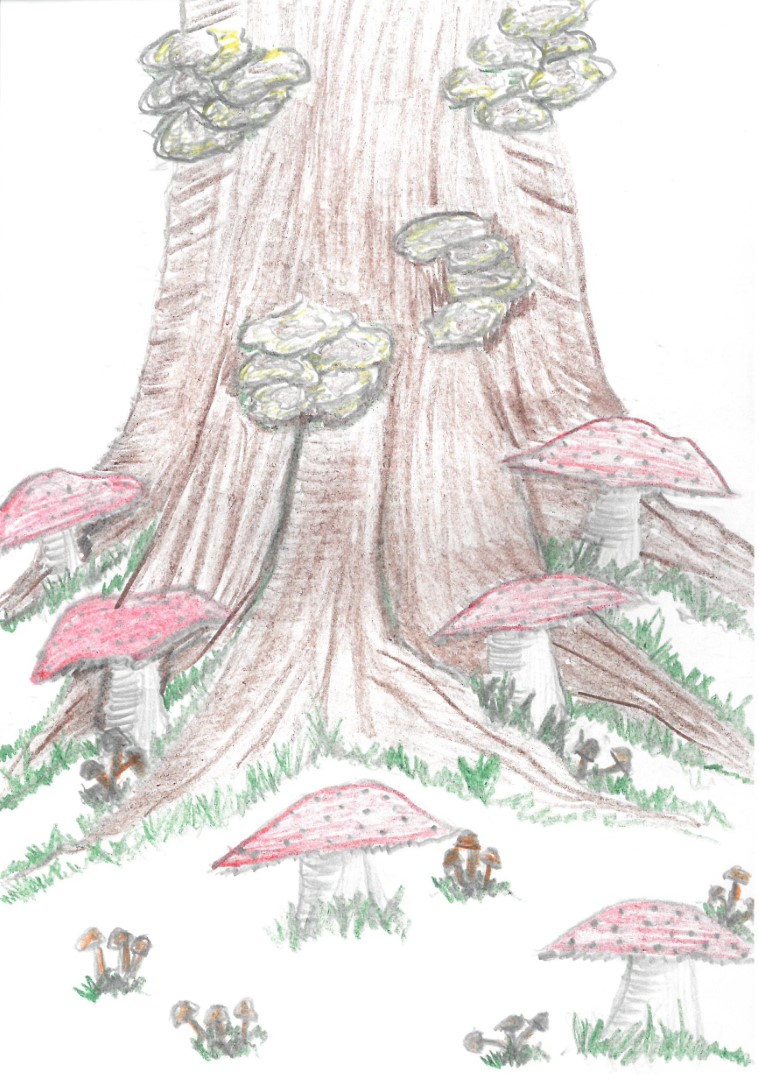
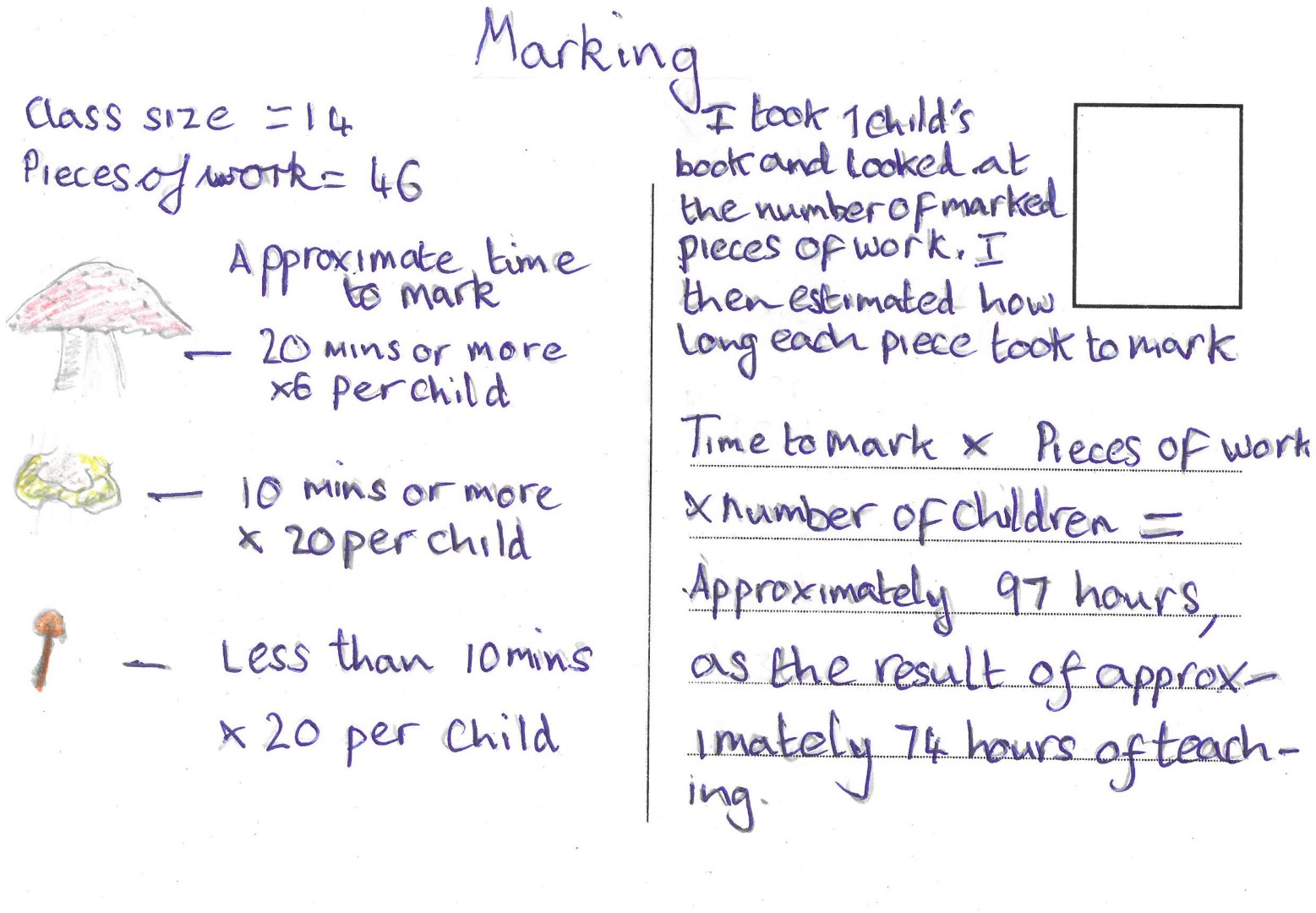
“I picked up a girl's English book, and I went through it and in it there were 46 pieces of work that I'd marked and so what I did was I tried to approximate how much time it took to mark each piece of work. The big toadstools are extended pieces of writing that would have taken 20 minutes or more to mark and there were six of those. The mushrooms growing on the tree, they were ten minutes or more and there were 20 of those per child roughly. Then the small mushrooms are less than ten minutes and there were about 20 of those as well. After I'd looked at this one book I sort of extrapolated that and said it must be pretty much the same for every book. So I'd looked at the numbers of pieces of work marked, I'd estimated how long it took and then I multiplied the time it took to mark them by the number of pieces of work by the number of children and it came to approximately 97 hours of marking.”
Where do children go for support when writing independently?
“The floral representations are the tables of where the children sit and then the colours, I position myself near the front of the class so I'm the blue as the teacher and the children. I tried to track where they went and what they did but in terms of counting I think I might have failed a little bit there!
So the dots, I'd love to say that the dots are a representation of counting how many steps or how long it took them but it's not really. So, yeah, it was interesting which children felt the need to come and check in with me ...
This table is with them needing a lot of support and wanting to come and check in a lot but they also checked in with each other and one of them came and asked the question and then it was interesting because they kind of sent it round the table as a little message, 'We can use this, this is a good thing to use', so they kind of spread the love on their table.”

